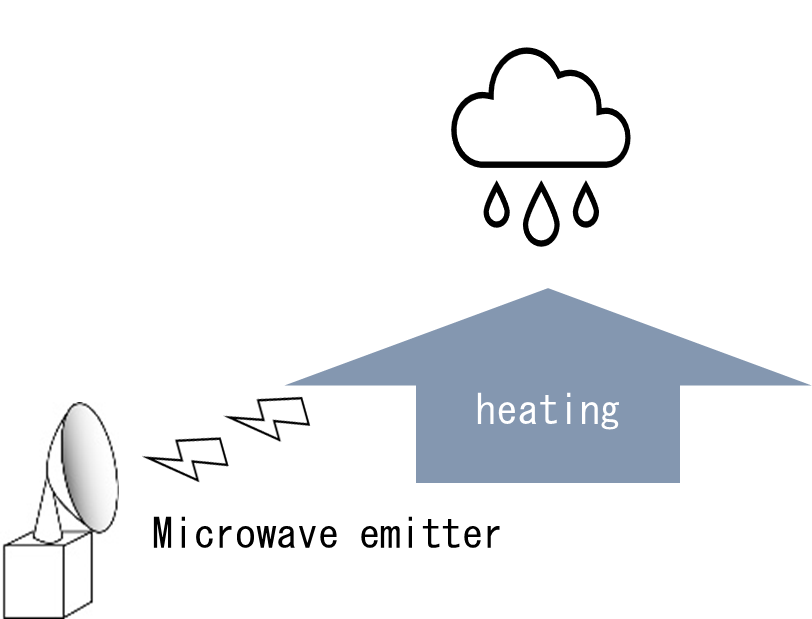Progress Report
Artificial generation of upstream maritime heavy rains to govern intense-rain-induced disasters over land (AMAGOI)[6] Engineering
Progress until FY2024
1. Outline of the project
Weather intervention to prevent damage from heavy rainfall has never been tackled in human history, and is by no means an easy task, even with the cutting-edge technologies. Even if it is feasible, it requires careful consideration of safety and ethical issues. One method currently proposed is microwave atmospheric heating technology (see Fig.1), in which microwaves are irradiated to a certain point in the sky to promote atmospheric heating and induce the formation of raining clouds away from densely populated areas. It is essential to repeatedly run simulations on a computer prior to engineering indoor and outdoor experiments to fully confirm whether this technique is effective from meteorological and societal viewpoints.

The feasibility of microwave atmospheric heating is verified through studies based on numerical simulations. In FY2024, we carried out numerical simulations to study whether or not it is technically feasible to artificially induce raining clouds by microwave atmospheric heating.
2. Outcome so far
Microwave atmospheric heating utilizes the microwave absorption by water vapor and oxygen molecules in the atmosphere, as well as cloud water and rainwater in the atmosphere. The figure shows the results of a simulation of atmospheric heating using microwave absorption by water vapor molecules as an example. In the calculation, a weather state characteristic over ocean around Japan are assumed with a microwave emitter with 1 megawatt power and an antenna gain of 40 dB.

Fig.2 (top) shows that a high heating rate (yellow) is expected in the vicinity of the emitter, but the heating rate rapidly decreases with distance from the emitter (blue). To visualize this more quantitatively, Fig. 2 (bottom) depicts its cross section at an altitude of 0.5 km, implying a heating of about 1°C per hour directly above the radiator (x=0). This value is comparable to the latent heating released in cumulonimbus clouds. It is hence theoretically possible to induce rain clouds by microwave heating.
3. Future plans
According to the simulation results, it is theoretically feasible to induce heating resulting in the artificial formation of rain clouds with realistic technology. However, there are several issues that need further consideration.
Firstly, a microwave beam is very narrow in the vicinity of the emitter. Fig.3 shows the microwave beam width, with smaller values indicating a narrower heating region. Even in the atmosphere at a distance of 1 km from the emitter, the beam width is about 40 m. Considering that the scale of cumulonimbus clouds can be several kilometers, heating is spatially limited to a very small area. Lowering the antenna gain (e.g., making the antenna smaller) will increase the beamwidth, but will dilute the heating rate for a given output power.

Secondly, effective microwave heating is limited to an altitude of 0.5 km directly above the emitter. Since a cumulonimbus cloud can develop to an altitude of 10 km or more, microwave heating is not expected to reach the entire depth of the cloud. However, once a cumulonimbus cloud grows to a certain altitude (Level of Free Convection or LFC), the cumulonimbus is able to develop on its own as driven by in-cloud buoyancy. It follows that if the air mass near the ground can be lifted to LFC by microwave heating, rain clouds would be capable of spontaneously deepening above that altitude. The feasibility of microwave heating with this in mind will be examined in future research.